Publication > Research Gallery > Theory
Research Gallery
Theoretical Astrophysics (Theory)
 |
Chaos in a cosmic shock The amplitude of the density perturbation grows as it propagates downstream (from left to right) across a C-type shock in a typical environment of star-forming clouds. The growth arises from ...(more) |
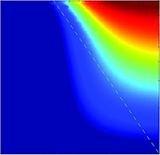 |
Vertical shear instability in magnetized protoplanetary disks Growth rates of the "vertical shear instability" (VSI) in magnetized disks, showing how magnetization stabilizes the VSI. ...(more) |
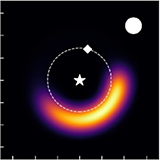 |
Vortex formation and evolution at planet gaps Synthetic observations of vortices formed at the outer gap edge of a planet. ...(more) |
 |
Puffed up dust at planet gaps Three-dimensional, dust-plus-gas simulation of a protoplanetary disk with an embedded planet. As the planet carves a gap in the disk, dust grains are elevated to high altitudes. Unlike simple 2D ...(more) |
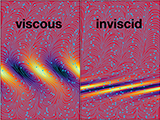 |
Streaming instabilities in stratified protoplanetary disks Structure of linearly unstable modes found in stratified, dusty protoplanetary disks ...(more) |
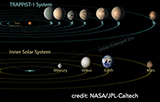 |
Harmony in a multiple-planetary system Formation of multiple-planet systems in resonant chains around M dwarfs, such as the famous Trappist-1 planetary system. The observed architecture of the orbital resonances depends on the formation time of ...(more) |
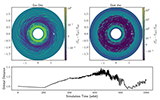 |
Planet migration in dusty protoplanetary disks Numerical simulation of low-mass planets migrating in dust-laden protoplanetary disks. The top panels show the perturbed gas and dust densities in the disk with initial metallicity 0.3 and particle Stokes ...(more) |
 |
Finding planets using Machine Learning A schematic diagram of the DPNNet (Disk Planet Neural Network) using a fully connected multi-layer perceptron. The first layer in yellow takes as input six feature variables observed from the ...(more) |
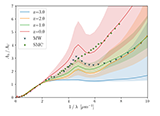 |
Dust properties predicted in a cosmological simulation We (Yu-Hsiu Huang, Hiroyuki Hirashita, et al.) modeled dust evolution in Milky Way-like galaxies by post-processing the IllustrisTNG cosmological hydrodynamical simulations in order to predict dust-to-gas ratios and grain size ...(more) |
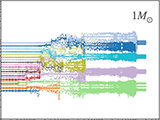 |
Earth-sized planet formation around late M dwarfs Numerical simulations of the time evolution of orbital radii of protoplanets, i.e., their dynamical histories. The top panel is the case for protoplanets around a 1 solar mass star, and ...(more) |
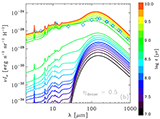 |
Evolution of grain size distribution in the interstellar medium Based on a one-zone evolution model of grain size distribution in a galaxy, we (Hirashita et al. 2020) calculated the evolution of infrared spectral energy distribution (SED), considering silicate, carbonaceous ...(more) |
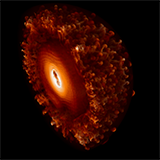 |
World’s First 3D Simulations Reveal the Physics of Superluminous Supernovae The nebula phase of the magnetar-powered super-luminous supernova from our 3D simulation. At the moment, the supernova ejecta has expanded to a size similar to the solar system. Large scale ...(more) |
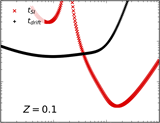 |
Making planetesimals in turbulent disks is not easy The "streaming instability" (SI) in a physical protoplanetary disk model. ...(more) |
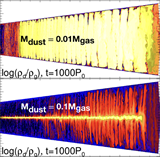 |
Dust settling in turbulent protoplanetary disks Numerical simulation of dust settling in turbulent protoplanetary disks. The color scales show the dust-to-gas ratio on a logarithmic scale. The top panel is taken from a simulation with a ...(more) |
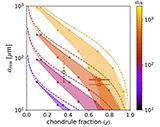 |
Meteorites as a clue to the accretion in the Solar System Comparison between the numerical estimation of the rim thickness (hatched regions) and observed thicknesses of fine-grained rims (open circles) on the rim thickness and chondrule fraction plane. The dotted line ...(more) |
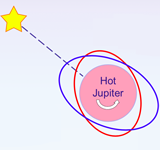 |
A Hot Jupiter Bloated by a Thermal Bulge A thermal bulge of a hot Jupiter is excited by stellar irradiation against a gravitational bulge, thereby maintaining an asynchronous rotation of the planet and preventing the planet from gravitational ...(more) |
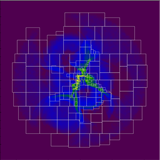 |
First galaxies Gas density distribution of the first galaxy after 33 Myr of evolution calculated by Chen & Chen (in preparation). The gas and metals inside supernova remnants mixes with surrounding gas ...(more) |
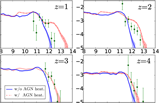 |
Comparison with submillimeter galaxy surveys We post-processed our cosmological hydrodynamic simulation with a simple dust emission model and calculated the infrared luminosity functions at redshifts z = 1–4 (Aoyama et al. 2019). We compare the ...(more) |
 |
Meteorites as a clue to the physical environment in the Solar System The evolution of the chondrules fraction in a chondrite parent body (1-χ) as the function of its mass (MCA) calculated by Matsumoto et al. (submitted). The vertical dotted line shows ...(more) |
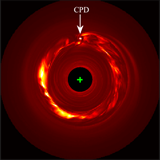 |
Kinetic signatures in disks produced by multi-Jupiter-mass planets Moment-2 image for the 13C18O J = 3–2 transition of the fiducial model at face on. The location of the circumplanetary disk is labeled. A 4×10-3 stellar mass planet induces ...(more) |
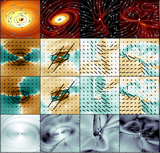 |
Observational signatures of early disk formation by MHD models Exploring protostellar disk formation via misaligned rotation axes and magnetic field, and their observable features. The streamlines on the column density maps show the direction of flows along the picture ...(more) |
 |
Shifting the Jet Stagnation Surface with the Black Hole Spin in GRMHD Simulations It is well-known that the relativistic outflow, which is driven by the spinning black hole, may NOT originated from the event horizon although the Poynting flux can be produced there ...(more) |
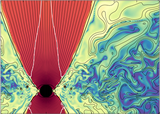 |
Self-consistent GRMHD Simulations with Steady Axisymmetric Force-free Jet Quasi-steady funnel jets are obtained in GRMHD simulations up to the scale of ∼ 100 gravitational radius (r_g) for various black hole (BH) spins. The funnel edge is approximately determined ...(more) |
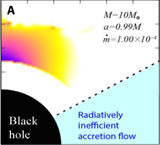 |
Lightning black holes in dense molecular clouds (A) Side view of a BH magnetosphere. Photons are emitted from infrared to soft gamma-ray energies by the hot gas falling toward the BH in the equatorial, accretion (cyan) region. ...(more) |
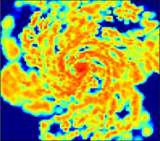 |
Simulation of dust and molecules in a disk galaxy Distribution of molecular gas surface density ...(more) |
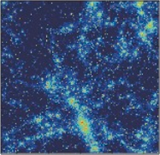 |
Dust enrichment in a cosmic volume Cosmological simulation with dust formation and destruction ...(more) |
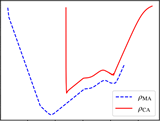 |
Formation of chondrite meteorite parent body The evolution paths of aggregates are plotted in the mass-density diagram. ...(more) |
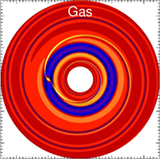 |
Dynamics of Protoplanetary Disk Footprints of planet formation. Interaction between a low mass protoplanet and its dusty protoplanetary disk. ...(more) |
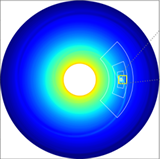 |
Formation and Evolution of Protoplanetary and Circumplanetary Disks with Antares Three-Dimensional Global Hydrodynamic Simulations Figure shows an example of a nested-grid mesh refinement (NMR) run carried out by the Antares code for a global protoplanetary disk with an embedded circumplanetary disk surrounding a 0.05-Jupiter-mass ...(more) |
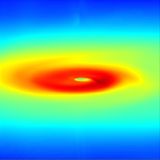 |
An early disk in formation from collapsing magnetic flows The panel of two figures illustrate the synthetic gas column density and linear polarization component q along the line of sight, inclined 15 degrees from the midplane, for a very ...(more) |
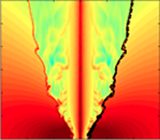 |
A Two-temperature Model of Magnetized Protostellar Outflows This figures illustrate density profiles in log scale from simulations of two-temperature model of outflows from a young stellar object. (Left) Mosaic of simulations demonstrating effects of varying temperature and ...(more) |
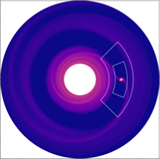 |
Dust Radiative Transfer on a Global Hydrodynamic Simulation of a Forming Circumplanetary Disk Left – Surface density distribution of a forming circumplanetary disk in a protoplanetary disk with the Antares three-dimensional global simulation. A planet of one-Jupiter mass is placed at (x,y) = ...(more) |
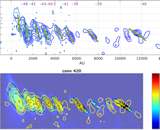 |
Ejection History of Protostellar Outflow IRAS 04166+2706 Illustration of wind model (left) and attempts to reproduce the velocity pattern of the blue lobe of the I04166 jet (right). The upper part of the left illustration shows two ...(more) |
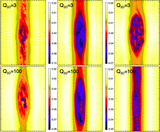 |
3D vortices in self-gravitating discs Vortex evolution in a self-gravitating disc (top) and a non-self-gravitating disc (bottom). ...(more) |
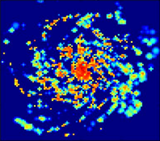 |
Simulation of molecular gas distribution in a galactic disk Molecular gas is considered to trace star formation activity in galaxies. We calculated the distribution of hydrogen molecules (H2) in a galactic disk based on our hydrodynamical simulation (Chen, Hirashita, ...(more) |
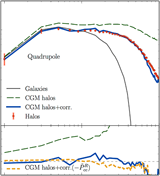 |
Theoretical modeling of large-scale galaxy distribution for a test of cosmic acceleration The black solid line is the quadrupole moment of the galaxy power spectrum (the suppression of the power on small scales is due to virial motions of satellite galaxies) and ...(more) |
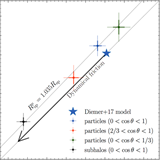 |
Dark matter distribution from the analysis of density and velocity fields The figure shows the constraints on physical boundaries of dark matter halos, known as splashback radii, from the density and velocity fields, respectively shown in the horizontal and vertical axes. ...(more) |
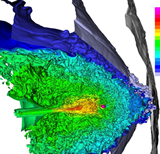 |
Hydrodynamical evolution of supernovae and its effect on galaxy evolution How First Supernovae Altered Early Star Formation? ...(more) |
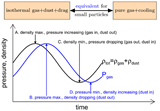 |
Dust-free modeling of dusty protoplanetary disks Isothermal gas with dust is equivalent to pure gas with cooling. ...(more) |
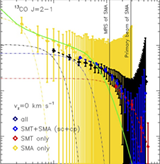 |
HIGH-RESOLUTION CO OBSERVATION OF THE CARBON STAR CIT 6 Radial profiles of the 12CO J = 2–1 (left panel) and 13CO J = 2–1 (right panel) emission of the carbon star CIT6 at its systemic velocity observed by the ...(more) |
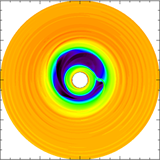 |
Numerical model for the asymmetric distribution of gas and dust column density maps of a face-on protoplanetary disk. Numerical model for the asymmetric distribution of gas (left panel) and dust (right panel) column density maps of a face-on protoplanetary disk. A massive giant planet (0.5% of the mass ...(more) |
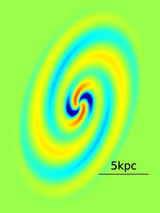 |
Stellar density wave of the spiral galaxy M81. Stellar density wave of the spiral galaxy M81. Left panel – Theoretical density distribution for a spiral mode. Middle panel – IRAC 3.6 micron map of the non-axisymmetric density distribution. ...(more) |
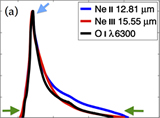 |
Neon Fine-Structure Line Emission from the Outflows of Young Stellar Objects Figure (a) shows the normalized line profiles of the Ne II 12.81um (blue), Ne III 15.55um (red), and the O I 6300 (black) lines for a X-Wind jet modeled for ...(more) |
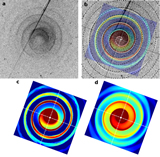 |
Binary nature revealed in a spiral pattern of AFGL 3068 A model comparison with an observed pinwheel spiral pattern of AFGL 3068: (a) The original Hubble Space Telescope image (Mauron & Huggins 2006), (b) the observed image overlaid with a ...(more) |
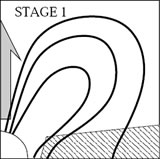 |
Magnetospheric Accretion and Ejection of Matter in Resistive Magnetohydrodynamic Simulations A schematic sketch of the evolution in star-disk interaction. ...(more) |
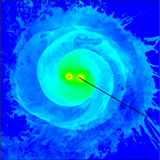 |
AMR Study of the Common Envelope Phase of Binary Evolution Gas density in the orbital plane of a binary system in the common envelope evolutionary phase. Gas quantities are sampled along the black line (see ApJ 746, 74), revealing the ...(more) |
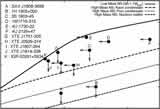 |
X-ray and Gamma-ray Emissions from Rotation Powered Millisecond Pulsars The results suggest that neutron stars in systems characterized by low thermal X-ray luminosities (i.e., SAX J1808-3658 and 1H 1905+000) may be of high mass. ...(more) |
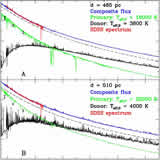 |
Theoretical Spectra of the AM CVn Binary System SDSS J0926+3624: Effects of Irradiation onto the Donor Star It can be seen that the donor can reveal emission lines in the infrared region. Observations of both the continuum and lines in this wavelength region will provide important insight ...(more) |
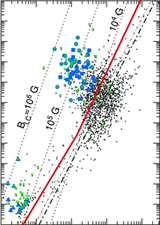 |
Death Line of Gamma-ray Pulsars with Outer Gaps Outer-gap death line on the period vs. derivative period plane. Left: entire parameter space. Right: close-up of the millisecond parameter range. ...(more) |
 |
Pulsed Gamma-Ray Emission from the Crab Pulsar Phase-averaged spectrum of the pulsed emission from the Crab pulsar predicted by the self-consistent outer gap model. ...(more) |
 |
Spectral Hardening in the Trailing Peak of Gamma-ray Pulsar Light Curve Evolution of the photon index Γ (top panel) and the cutoff energy Ec (bottom panel) with the rotational phase is depicted by the (red) thick solid curve. ...(more) |
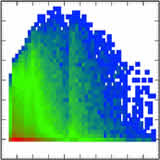 |
The Incidence of Non-spherical Circumstellar Envelopes in AGB Stars The figures show the number of systems (color coded) for a degree of asymmetry, as measured by K, as a function of the orbital separation, luminosity, mass of the AGB ...(more) |
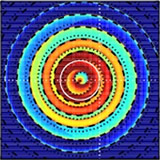 |
Gravitationally Induced Density Wake of a Circularly Orbiting Object As an Interpretative Framework of Ubiquitous Spirals and Arcs The above figures show the density enhancement of the spiral-onion shell shape (a) in the equatorial plane, (b) in a meridional plane, and (c) as a function of the distance ...(more) |
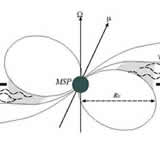 |
On the Transition from Accretion Powered to Rotation Powered Millisecond Pulsars A schematic view of binary system during the transition from the accretion powered low mass X-ray binary phase to the rotation powered millisecond radio pulsar phase. ...(more) |
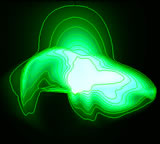 |
The Telescope of theory: synthetic SiO(7-6) emission from a young low-mass protostellar object embedded in an infall envelope SiO(7-6) image generated by non-LTE radiative transfer simulations along with MHD simulation. The low-mass (0.6 solar mass) object at the earliest stage of star formation shows significant irregular morphology compared ...(more) |
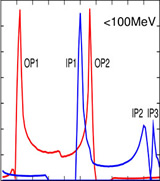 |
Non-thermal Emissions from Pulsars The figure compares between the light curves (>100MeV) of the observation and the theory. ...(more) |
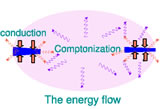 |
The Existence of Inner Cool Disks in the Low Hard State of Accreting Black Holes Schematic picture of the truncated outer disk separated from the inner disk by a coronal gap, indicating the energy and mass flow in the configuration. ...(more) |
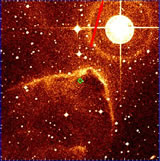 |
Triggered Formation of Young Stars Figure 1 shows DSS image of bright-rimmed cloud SFO21 whose ionizing star is located at 7 pc from the cloud. The arrow and diamond shows the direction of ionizing star ...(more) |
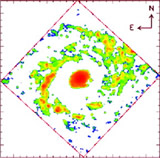 |
On the Spiral Structure of NGC 5248: An Analytic Approach Comparisons between the observational intensity maps and the model images calculated from our theory for the galaxy NGC 5248. The left panels, from top to bottom, are B-band, CO (1-0), ...(more) |
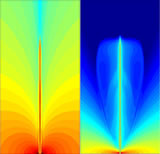 |
Unified Model for Jets and Outflows from Young Stars The figure shows the density structures at 100 (top) and 1000 (bottom) years with four representative numbers n = 1, 2, 4, 6 (from left to right), which indicates the ...(more) |
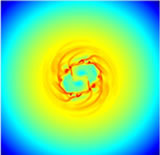 |
Evolution and Instability of a Self-gravitating Galactic Gaseous Disk under the Influence of a Fast Rotating Bar Potential Surface density for single OLR. Spiral waves are excited at 2kpc by a fast bar potential, lying in the horizontal direction. The high density spiral regions would lead to starbust ...(more) |
 |
Magnetization-Shaped Initial Mass Function Schematic Initial Mass Function (Shu, Li, & Allen, 2004, ApJ, 601, 930) ...(more) |
